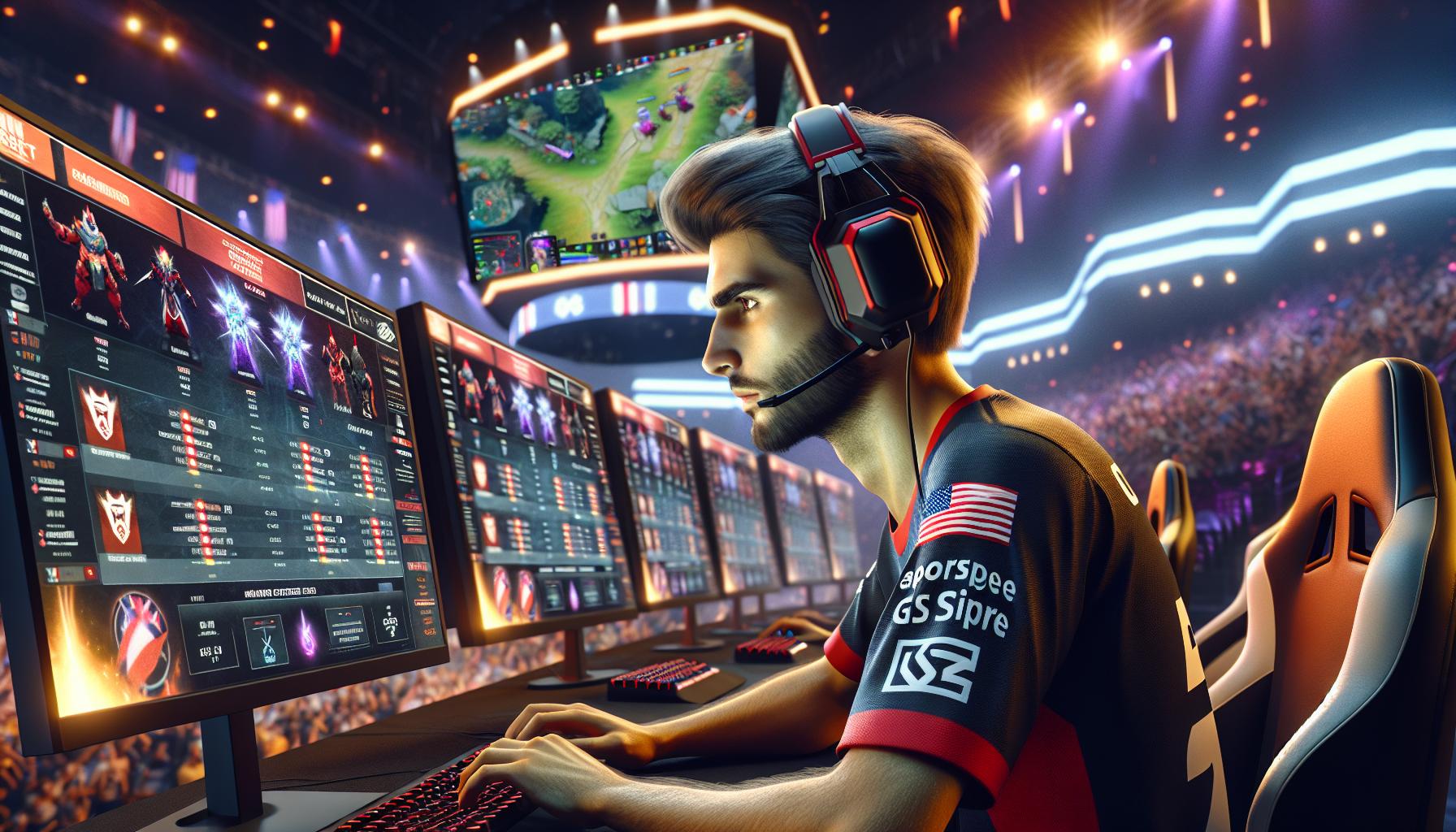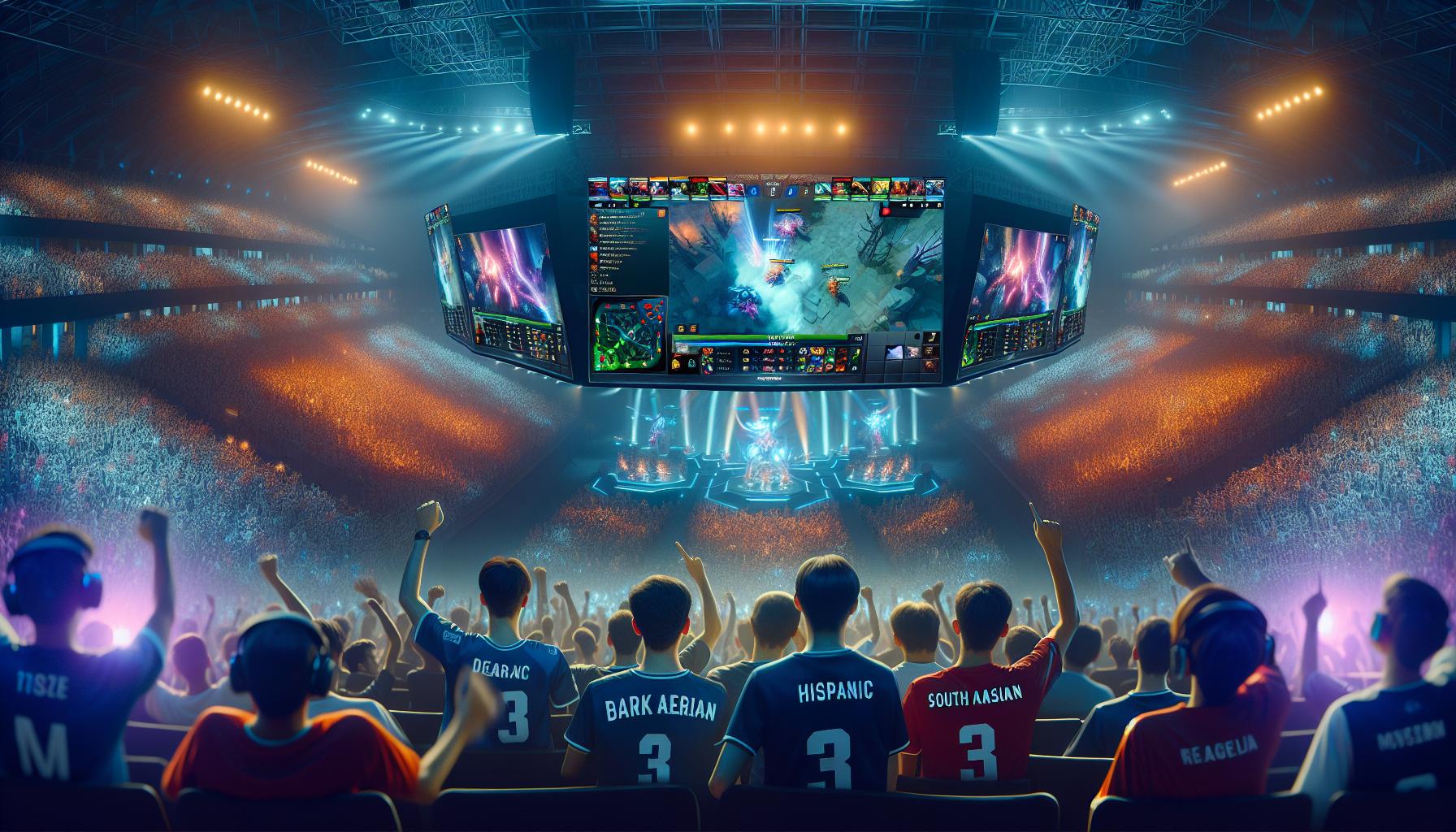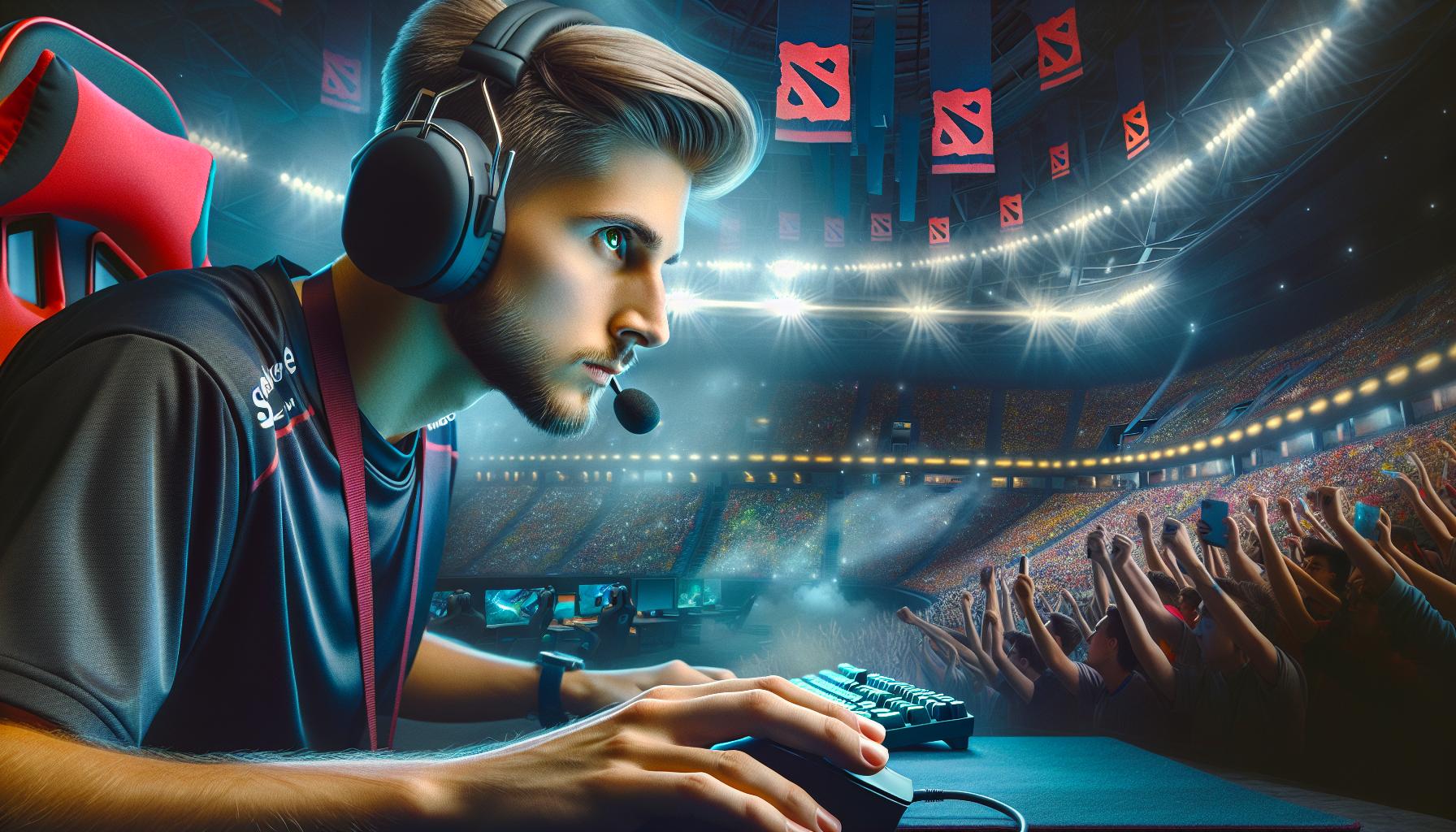Dota 2 Esports Stats: Inside The Numbers of Professional Gaming Success (2023)

As a passionate Dota 2 enthusiast I’m constantly amazed by the incredible statistics that shape professional gameplay. From win rates and hero picks to prize pools and player performances the numbers tell fascinating stories about this dynamic esport.
When I dive into Dota 2’s competitive scene I find that statistics aren’t just numbers – they’re powerful insights that reveal meta trends strategic patterns and player achievements. The game’s complexity has generated an impressive array of data points tracked across thousands of professional matches worldwide. These stats have become essential tools for teams analysts and fans who want to understand the game at its highest level.
Key Takeaways
- Dota 2’s esports prize pools have grown exponentially, with The International reaching $40 million in 2021 from an initial $1.6 million in 2011
- Professional matches show consistent patterns with hero pick/ban rates of 85-90% pool utilization and average game lengths of 37.5 minutes
- Western European teams lead with a 58% win rate in international competitions, followed by Chinese teams at 55%
- Major Championships feature $500,000 base prize pools, 18 teams from 6 global regions, and distribute 3,500 DPC points
- Top players maintain impressive stats with carries averaging 650-750 GPM and supports achieving 3.5-4.5 KDA ratios
The Rise of Dota 2 as an Esports Powerhouse
Dota 2’s competitive scene emerged in 2011 and transformed into a global phenomenon through key milestones and unprecedented growth. The International, Dota 2’s premier tournament, set new standards with its revolutionary crowdfunding model in 2013.
| Year | The International Prize Pool | Percentage Growth |
|---|---|---|
| 2011 | $1.6 million | – |
| 2013 | $2.8 million | 75% |
| 2016 | $20.7 million | 639% |
| 2019 | $34.3 million | 65% |
| 2021 | $40.0 million | 16% |
The professional circuit has expanded beyond The International to include:
- Major Championships featuring 16 teams competing for $500,000 prize pools
- Regional Leagues operating across 6 global divisions
- Third-party tournaments offering combined prizes exceeding $2 million annually
- Pro Circuit points determining qualification for The International
The game’s competitive infrastructure includes:
- 5 dedicated tournament organizers hosting official events
- 30+ professional teams competing full-time
- 120+ broadcasters providing multilingual coverage
- 4 seasonal rounds of competition per year
The viewership metrics demonstrate sustained growth:
- Peak concurrent viewers: 2.7 million (The International 2021)
- Average monthly viewers: 750,000 across all competitions
- Broadcasting platforms: Twitch Twitch YouTube Steam.tv
- Regional coverage in 12 languages
These statistics position Dota 2 among the top 3 esports titles globally, alongside League of Legends and Counter-Strike: Global Offensive.
Key Tournament Statistics and Prize Pools

Tournament statistics reveal Dota 2’s financial growth through prize pools, viewership metrics, and championship data across multiple competitive tiers.
The International Prize Pool Evolution
The International’s prize pool growth demonstrates Dota 2’s crowdfunding success through Battle Pass contributions. Here’s the yearly progression:
| Year | Prize Pool | % Increase from Previous Year |
|---|---|---|
| 2013 | $2.8M | Initial Crowdfunding Year |
| 2014 | $10.9M | 289% |
| 2015 | $18.4M | 69% |
| 2016 | $20.7M | 12% |
| 2017 | $24.8M | 20% |
| 2018 | $25.5M | 3% |
| 2019 | $34.3M | 34% |
| 2020 | $40.0M | 17% |
| 2021 | $40.0M | 0% |
Major Championships Data
Major Championships complement The International with significant prize pools and competitive achievements:
- Prize Distribution: $500,000 base prize pool per Major
- DPC Points: 3,500 points allocated per Major tournament
- Regional Representation: 18 teams from 6 global regions
- Format Structure:
- Group Stage: 2 groups of 9 teams
- Playoffs: Double elimination bracket
- Finals: Best-of-5 series
| Metric | Average per Major |
|---|---|
| Total Games | 150+ |
| Match Duration | 35-40 minutes |
| Heroes Picked | 95-105 |
| Peak Viewers | 500,000+ |
Player Performance Metrics

Player performance metrics in Dota 2 esports encompass detailed statistics tracking individual achievements across professional matches. These metrics provide quantifiable data about player efficiency impact on competitive gameplay.
Individual Hero Win Rates
Professional players demonstrate varying success rates with specific heroes in competitive matches. The highest win rates belong to situational picks with 65-75% success rates across limited sample sizes of 15-20 games. Popular heroes maintain balanced win rates between 48-52% over larger sample sizes of 100+ games. Here’s a breakdown of notable hero win rates from The International 2022:
| Hero | Games Played | Win Rate |
|---|---|---|
| Marci | 45 | 62.2% |
| Primal Beast | 38 | 60.5% |
| Enigma | 52 | 57.7% |
| Leshrac | 95 | 54.7% |
| Tiny | 82 | 51.2% |
Professional Player Statistics
Top-tier players maintain consistent performance metrics across multiple tournaments. Key performance indicators include:
- GPM (Gold Per Minute): Elite carries average 650-750 GPM
- XPM (Experience Per Minute): Mid players achieve 650-800 XPM
- KDA Ratio: Support players maintain 3.5-4.5 KDA ratios
- Last Hits: Position 1 carries secure 300-400 creep kills by 30 minutes
- Impact Score: Calculated from kill participation damage dealt hero healing
| Metric | Average | Top Performance |
|---|---|---|
| GPM | 550 | 1,250 |
| XPM | 585 | 1,100 |
| KDA | 3.2 | 12.5 |
| Last Hits/10min | 65 | 95 |
Team Rankings and Success Rates

Professional Dota 2 teams demonstrate varying levels of success across different regions and tournaments. Statistical analysis reveals distinct patterns in team performance metrics spanning multiple competitive seasons.
Regional Performance Analysis
Team success rates differ significantly across Dota 2’s six competitive regions. Western European teams maintain a 58% win rate in international competitions, while Chinese teams follow closely at 55%. Here’s a breakdown of regional dominance:
| Region | Win Rate | Int’l Tournaments Won | Major Appearances |
|---|---|---|---|
| Western Europe | 58% | 12 | 145 |
| China | 55% | 15 | 138 |
| Eastern Europe | 52% | 8 | 112 |
| Southeast Asia | 48% | 4 | 98 |
| North America | 47% | 3 | 86 |
| South America | 45% | 1 | 74 |
Tournament Placement Statistics
Top-tier teams showcase consistent performance patterns in premier tournaments. Team Spirit achieved four consecutive top-3 finishes in 2022-2023 DPC events, while PSG.LGD secured seven Major grand finals appearances between 2021-2023.
| Team | Top 3 Finishes | Grand Finals | Championships |
|---|---|---|---|
| Team Spirit | 8 | 6 | 4 |
| PSG.LGD | 12 | 7 | 3 |
| Team Liquid | 7 | 5 | 3 |
| Gaimin Gladiators | 6 | 4 | 3 |
| Tundra Esports | 5 | 3 | 2 |
These statistics reflect data from DPC Majors, The International, and premier third-party tournaments from 2021-2023, establishing clear performance benchmarks for professional teams.
Game Meta Analysis Through Numbers
Statistical analysis reveals distinct patterns in professional Dota 2 matches, providing insights into strategic trends across different patches and tournaments. Here’s a detailed breakdown of key meta indicators:
Hero Pick/Ban Rates
The hero selection phase demonstrates clear patterns in professional matches, with specific heroes dominating each meta cycle. Top-tier tournaments display a hero pool utilization rate of 85-90% across all available heroes. Here’s a breakdown of pick/ban statistics from recent major tournaments:
| Metric | Percentage/Number |
|---|---|
| First Phase Ban Rate | 15-20% |
| First Phase Pick Rate | 25-30% |
| Total Heroes Picked | 110-115 |
| Heroes with 75%+ Ban Rate | 3-5 |
| Average Hero Contest Rate | 45% |
Core heroes maintain a consistent presence with pick rates between 15-20% while support heroes show more flexibility at 8-12%. The most contested heroes appear in 80% of drafts through picks or bans.
Match Duration Trends
Professional match durations exhibit specific patterns based on meta changes and patch updates. Current tournaments show the following duration metrics:
| Duration Type | Time (Minutes) |
|---|---|
| Average Game Length | 37.5 |
| Shortest Common Duration | 25-30 |
| Longest Common Duration | 55-60 |
| Early GG Calls | 15-20 |
| First Blood Timing | 2-4 |
Patch updates influence game pace significantly, with farming-focused metas extending average durations by 5-7 minutes compared to fighting-oriented patches. Early game objectives take priority in 65% of matches, leading to decisive advantages by the 25-minute mark.
Conclusion
The numbers don’t lie – Dota 2’s esports scene continues to break records and set new benchmarks for competitive gaming. From the astronomical prize pools to the intricate player statistics these numbers paint a clear picture of a thriving competitive ecosystem.
I’ve seen firsthand how these statistics have shaped the professional landscape fostering deeper strategic understanding and elevating the quality of gameplay. They’re not just numbers on a screen but vital tools that help players teams and fans grasp the incredible depth of professional Dota 2.
As the game evolves I’m excited to see how future statistics will tell new stories of triumph innovation and competitive excellence in this dynamic esport.



